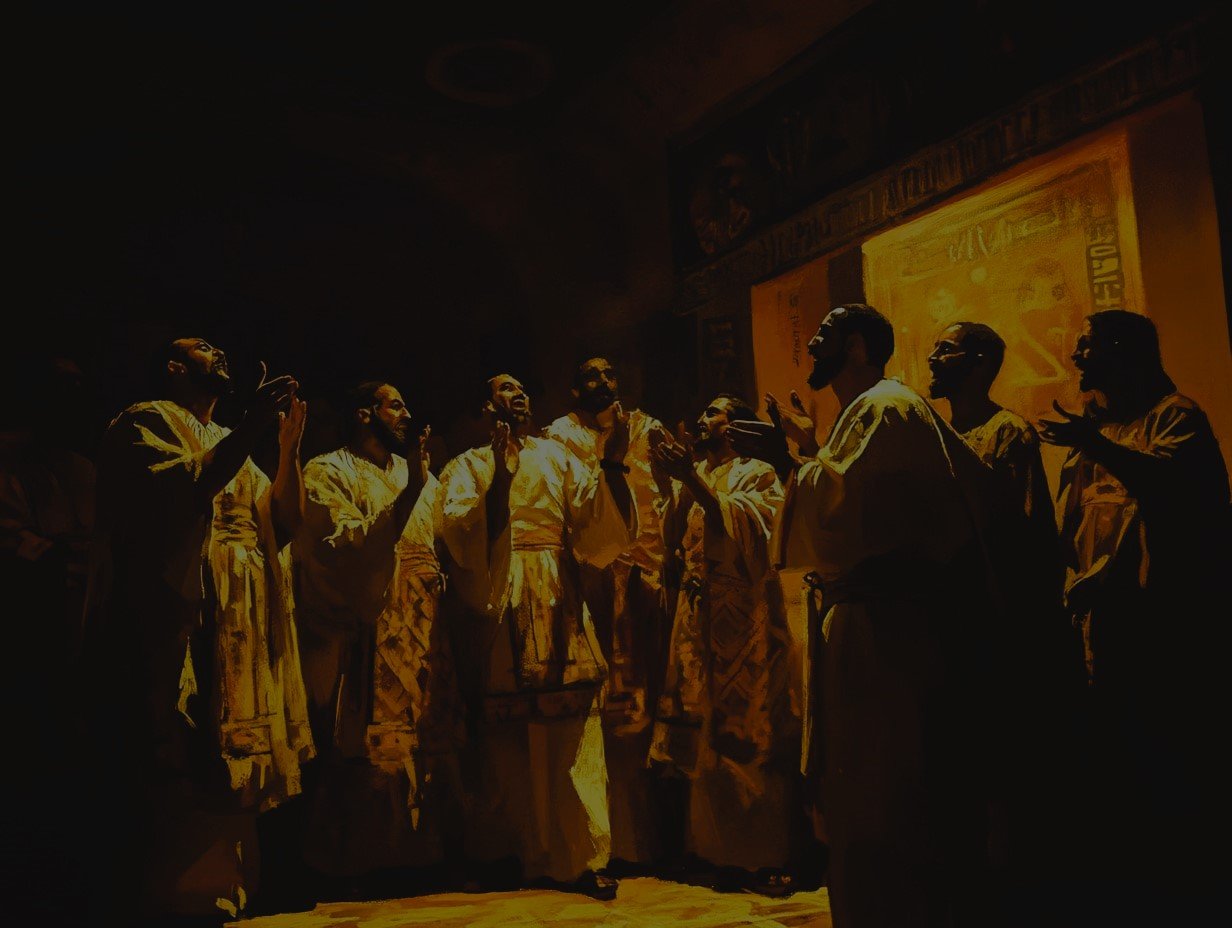
What are the Voces Mysticae?
The Voces Mysticae is a divine language constituted by mixed-up forms of the names of various deities, holy phrases, palindromes, and extended sequences of vowels, which were composed or divined in antiquity as the lexicon of ecstatic union. These inexplicable tones can create music by combining these sounds in the style of droning, chanting, or singing. I have composed each of these songs and hired talented Egyptian musicians to bring them to life. I have hired other musicians to cover them in different genres so that they can be enjoyed in different contexts.
The Voces Mysticae are living sumbola: aural hieroglyphs that close the distance between invoker, name, and god. Like Ra’s self-naming litany, a formula gathers a deity’s dispersed potencies into a single invocation, so that to pronounce the name is to reenact the creation-order the god embodies. Iamblichus explains that the gods “rejoice when their inferiors imitate them,” and grant ascent through symbols that supersede discursive reason.
The Voces function as a demiurgic speech that purifies the soul. Plotinus calls this a “synoptic image,” where whole intelligibles are apprehended at once rather than spelled out in discursive propositions. When the Theurgist intones them, the soul-vehicle becomes sympathetic with the unseen logoi. The pneuma becomes a ladder for the soul to achieve communion with daimons, angels, and gods who manifest “more clearly than truth itself.”
Finally, the Voces Mysticae serve as an exercise of anamnesis or “remembrance.” Just as Muslim zhikr (حضرة الذكر) or Christian pekethronos (ⲡⲉⲕ̀ⲑⲣⲟⲛⲟⲥ) repeats sacred phrases to purify the soul, these invocations replace the seperatory partiality of the individual soul with the god’s self-identification. The Voces are one form of ritual identification where speech becomes action, action becomes being, and the speaker, however briefly, stands within the moment when the Divine Name and the Divine Reality are one.





